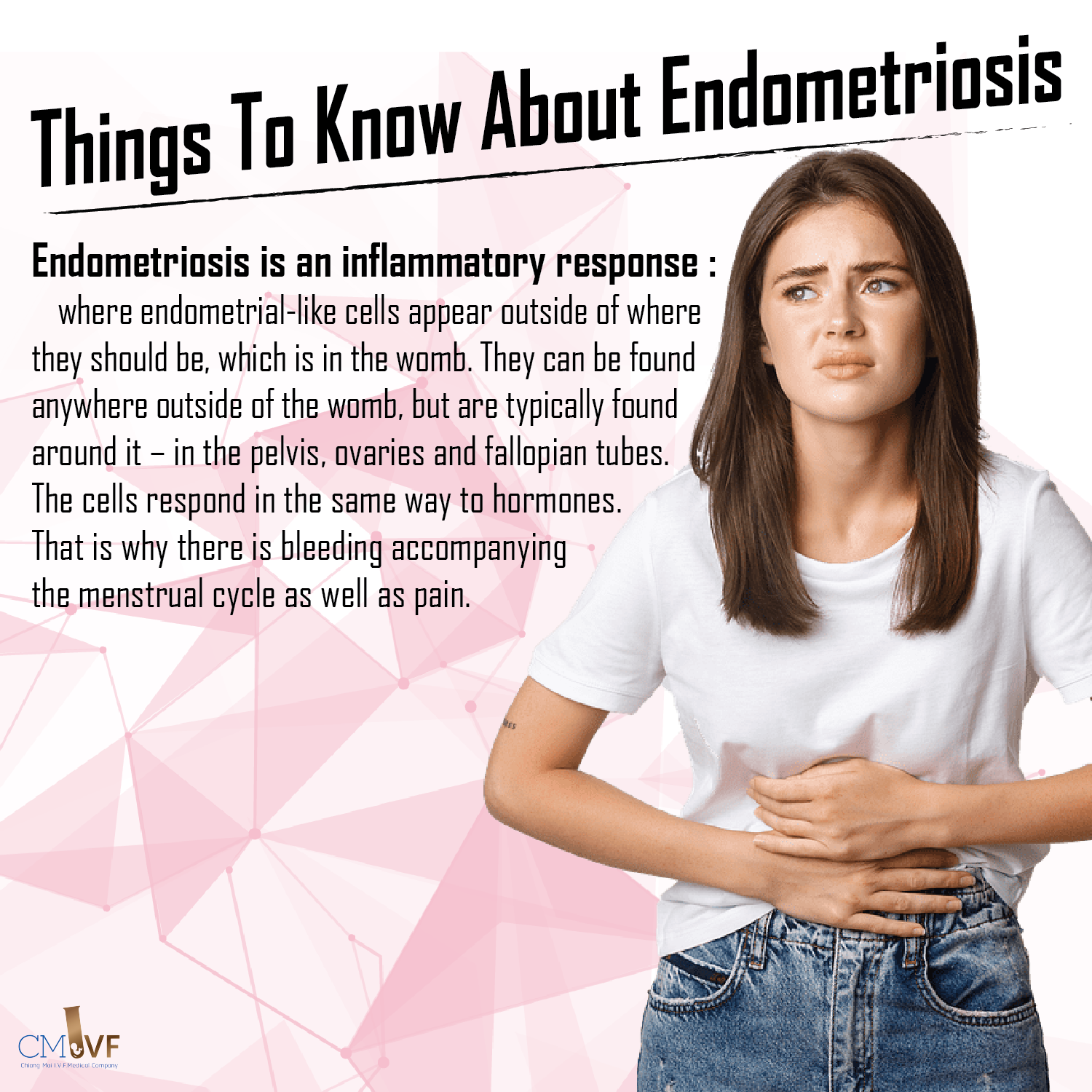Endometriosis is an inflammatory response – where endometrial-like cells appear outside of where they should be, which is in the womb. They can be found anywhere outside of the womb, but are typically found around it – in the pelvis, ovaries and fallopian tubes. The cells respond in the same way to hormones. That is why there is bleeding accompanying the menstrual cycle as well as pain.
Symptoms include painful cycles or if they change will get more intense or heavy, thereby experiencing a lot of old or dark blood spotting before the cycle. In addition, pain during or after sex, feeling sick; fatigue; and experiencing diarrhea, constipation or blood in your urine or stool during the menstrual cycle. Infertility is also another key symptom.
It can start at any point during a woman’s reproductive phase. It is difficult to diagnose. As with many women’s health issues, endometriosis is often confused with other illnesses, such as polycystic ovarian syndrome (PCOS), premenstrual syndrome (PMS) and premenstrual dysphoric disorder (PMDD), as the symptoms are often similar. Symptoms can be masked with contraception, so people don’t know they have it until they come off of birth control.
Finally, as of now there is no cure. It’s a long-term chronic condition that isn’t easily treated. Treatments range from painkillers, such as ibuprofen and paracetamol, to hormonal medicines and contraceptives (like the combined pill and Mirena coil), and in extreme cases surgery, such as scar tissue removal, and even hysterectomy, where the womb is removed to stop the disease from spreading further.
Ref:
https://www.vogue.co.uk/article/everything-you-need-to-know-about-endometriosis 